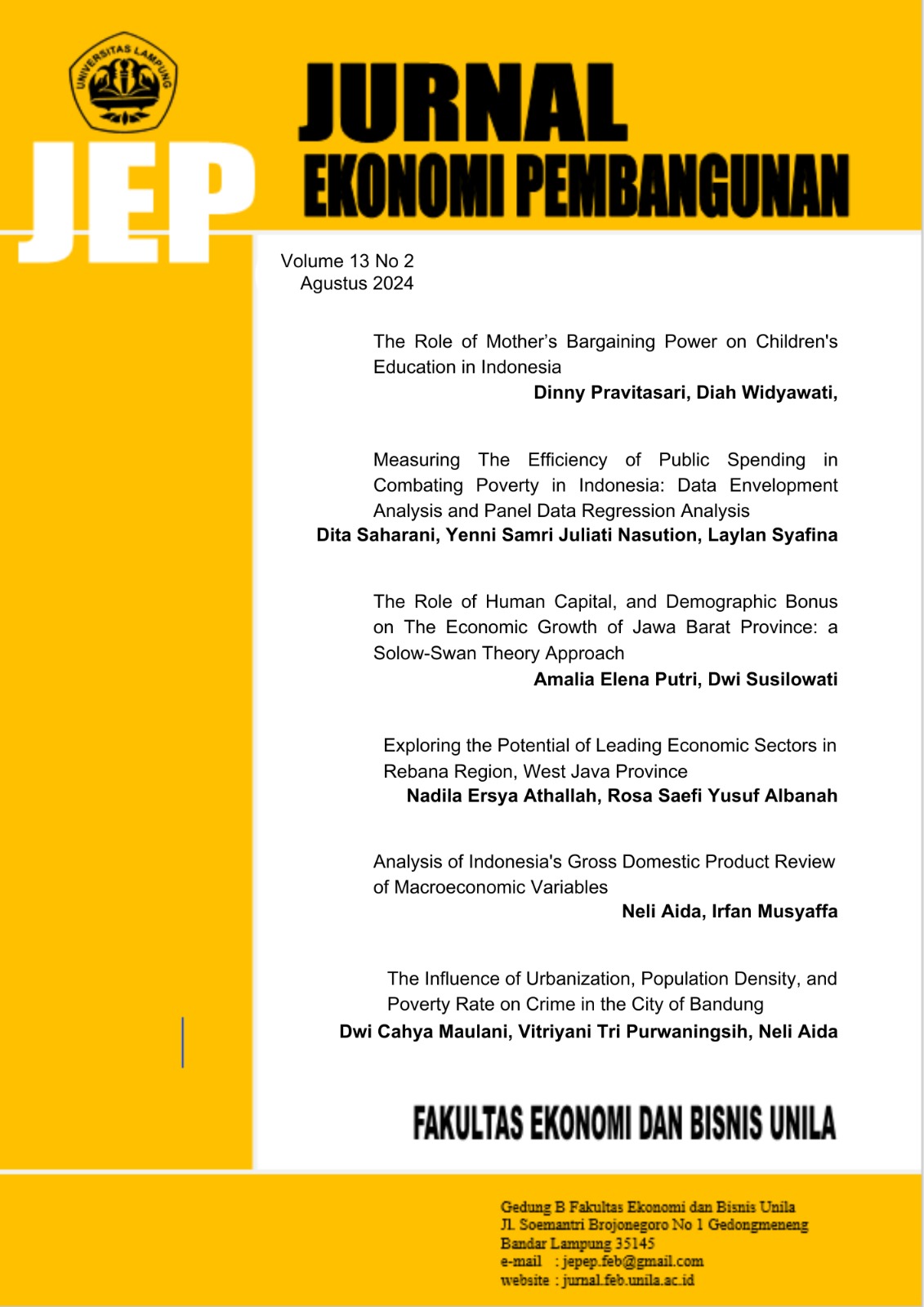The Role of Human Capital and Demographic Bonus on The Economic Growth of Jawa Barat Province
Abstract
This study uses the Solow-Swan theory to analyze the role of human capital and demographic bonuses on economic growth in Jawa Barat Province. This study uses a panel data regression approach, specifically generalized least squares (GLS) regression with a fixed-effects model, to analyze data from several districts and cities in Jawa Barat Province. Human capital is measured through average years of schooling and life expectancy, whereas demographic bonus is proxied by the proportion of the productive age population (15-64 years). The results show that average years of schooling have no significant effect on economic growth, indicating that increased education does not always directly impact economic performance, possibly because of a mismatch between educational outcomes and labour market needs. In contrast, life expectancy has a positive and significant relationship with economic growth, supporting the Solow-Swan model, which emphasizes health as an important component of human capital that can increase productivity. Demographic bonuses, represented by the productive-age population, average a positive and significant effect on economic growth, suggesting that a larger proportion of productive-age individuals contribute to increased output and economic expansion through the demographic bonus. There is a need for policies that focus on improving the quality of education and suitability to the labour market to maximize the potential of human capital and demographic bonuses in supporting sustainable development in Jawa Barat.
Downloads

This work is licensed under a Creative Commons Attribution-NonCommercial-ShareAlike 4.0 International License.
Jurnal Ekonomi Pembangunan allows readers to read, download, copy, distribute, print, search, or link to the full texts of its articles and allow readers to use them for any other lawful purpose. The journal allows the author(s) to hold the copyright without restrictions. Finally, the journal allows the author(s) to retain publishing rights without restrictions
Authors are allowed to archive their submitted article in an open access repository
Authors are allowed to archive the final published article in an open access repository with an acknowledgment of its initial publication in this journal




1.png)
